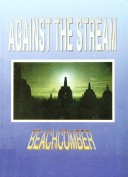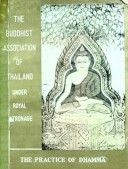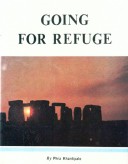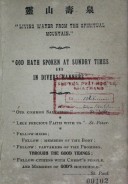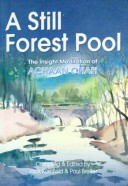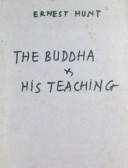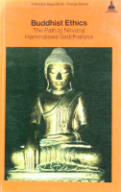INTRODUCTION
Back in 1984, I wrote my first book, KEYS FOR REFUGEES, mainly for the refugees of SE Asia, to encourage them to hold onto and understand their religion in the face of the concerted efforts of missionaries to convert them. Years later, I rewrote it under the new title DOWN TO EARTH, updating and enlarging it. Now, almost ten years later stilt, it incarnates for the third time, with new name and form. And since I have also changed, I’ve taken on a new name, too, a name that I feel suits me more than previous names, for this is what I am and have been since as far back as I remember a Beachcomber. I have always enjoyed—and stilldo—strolling along the beach looking at what the tides have cast up: sea-shells, pebbles, driftwood, and so on. It is just an extension of this to look at life, open to the unexpected, trying to extract lessons there-from, wondering how to use what others may find useless.
Collectively speaking, we are the most fortunate people in history, at a stage of evolution that has never been reached before. It is as if we are on a mountainside, with people below us for as far as we can see, until they look like tiny ants or grains of sand on the plain. We do not and cannot know who those people were, but we canunderstand that if they had not been where they were, so long ago, we would not be where we are now. We are here now only because they were there then; if the chain of continuity had broken, we simply would not exist
By ourselves, we have accomplished nothing; whatever we are able to accomplish we do so only because of the support of countless others, living and dead; even our languages, which make our lives so very rich and meaningful, are not ours, but have come from others. There is nothing we can claim as our own; we exist only in context, as part of something muchbigger than our individual selves.
Humbled by the view below us and the realization that we owe so much to so many, turn, and look up: the mountain-top is so far above US, hidden in mist and clouds, and cannot be perceived; we—you and I—will never reach the top. Like those before us, we are privileged to take just a few steps upwards before making way for others to come after us. We will die, of course, but if we live purposefully, we will die with the satisfaction of knowing that our living and striving will help others to climb higher than we did. For what are our lives otherwise? It is crucial to see and feel ourselves in perspective, in context, for if we think of ourselves in isolation, separate from the rest of existence, there is no meaning.
What we are doing when we embark upon a spiritual path, is to deliberately turn our backs on the ways of the world, and go against the stream, hence the title of this book. It is a choice we consciously make, and shouldn’t be half-hearted about it. But it doesn’t mean that we walk out on it altogether and retire to a cave as a hermit; it means that we have decided to try to keep the Dharma at the center of our lives—around which all our activities revolve—instead of at the circumference; it is not something part-time.
Some articles herein are little changed from DOWN TO EARTH, while others have been modified and upgraded, some of them considerably, others are completely new. In this book, too, apart from errors that might still evade my scrutiny (some always do), I am including some deliberate ones, which are therefore not errors at all. It will interest me to see who points them out. I am also writing it in small print, not just to economize on paper—though that is one reason, I admit—but to make it a bit harder for people to read. And why should I do that, instead of making it easier? Well, why should we treat people as little children, always to be spoon-fed? I know some people will complain about it being ‘too small’, so I’ll forestall them by asking them how they manage to read newspapers?
If you are sufficiently interested to want to read it, you will read it even if you must use a magnifying-glass. And I guarantee that It you have the necessary interest, you will get something. It depends upon you; my aim, as always, is to turn you back to yourself.
Beachcomber
Malaysia. 1998
CONTENTS
- BELIEVING IS NOT SEEING…………………………… 1
- IF IT’S WRONG, DISCARD IT…………………………. 7
- LEARNING…………………………………………………….. 11
- GREAT EXPECTATIONS, GREAT DISAPPOINTMENTS……17
- SEEKING HAPPINESS, AVOIDING PAIN………… 24
- FORGIVE YOURSELF……………………………………..30
- THE BIRD OF IRON……………………………………….. 39
- DON’T FOLLOW ME………………………………………..43
- TRUTH………………………………………………………….. 50
- TRANSLATION……………………………………………. 54
- WHAT HAVE WE GOT?……………………………….. 59
- KING CANUTE REVISITED…………………………..65
- YES, YES, NO, NO……………………………………….. 69
- DROPPING OUT…………………………………………… 73
- PREVENTION IS BETTER THAN WAR…………. 65
- WHAT, NOT WHO………………………………………… 92
- THE MONK AND THE BODHI-TREE……………..95
- THINK ABOUT IT………………………………………… 97
- MANY FACES……………………………………………… 101
- FULL CIRCLE………………………………………………. 105
- HIGH AND DRY…………………………………………… 103
- BACK TO THE ROOTS…………………………………. 107
- MAHAYANA AND HIMAYAMA…………………… 111
- NOBODY’S MONKEY………………………………….. 115
- FACT, NOT FICTION……………………………………. 120
- A LETTER TO MY OLD SCHOOL-TEACHER… 124
- NO MARATHON………………………………………….. 127
- WHAT IS A TEMPLE?…………………………………… 129
- TAKE A BREAK-HAVE A HOLIDAY…………….. 139
- INCREDIBLE………………………………………………… 141
- SHEEP…………………………………………………………. 149
- TAKING REFUGE………………………………………… 152
- NOT JUST IN THE MIND………………………………. 155
- THE SWASTIKA…………………………………………… 159
- DESTRUCTION AND CREATION…………………. 162
- THE BUDDHA’S FIRST JOURNEY………………… 168
- EPILOGUE……………………………………………………. 178
 Facebook
Facebook
 Google
Google
 Google+
Google+
